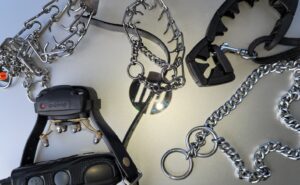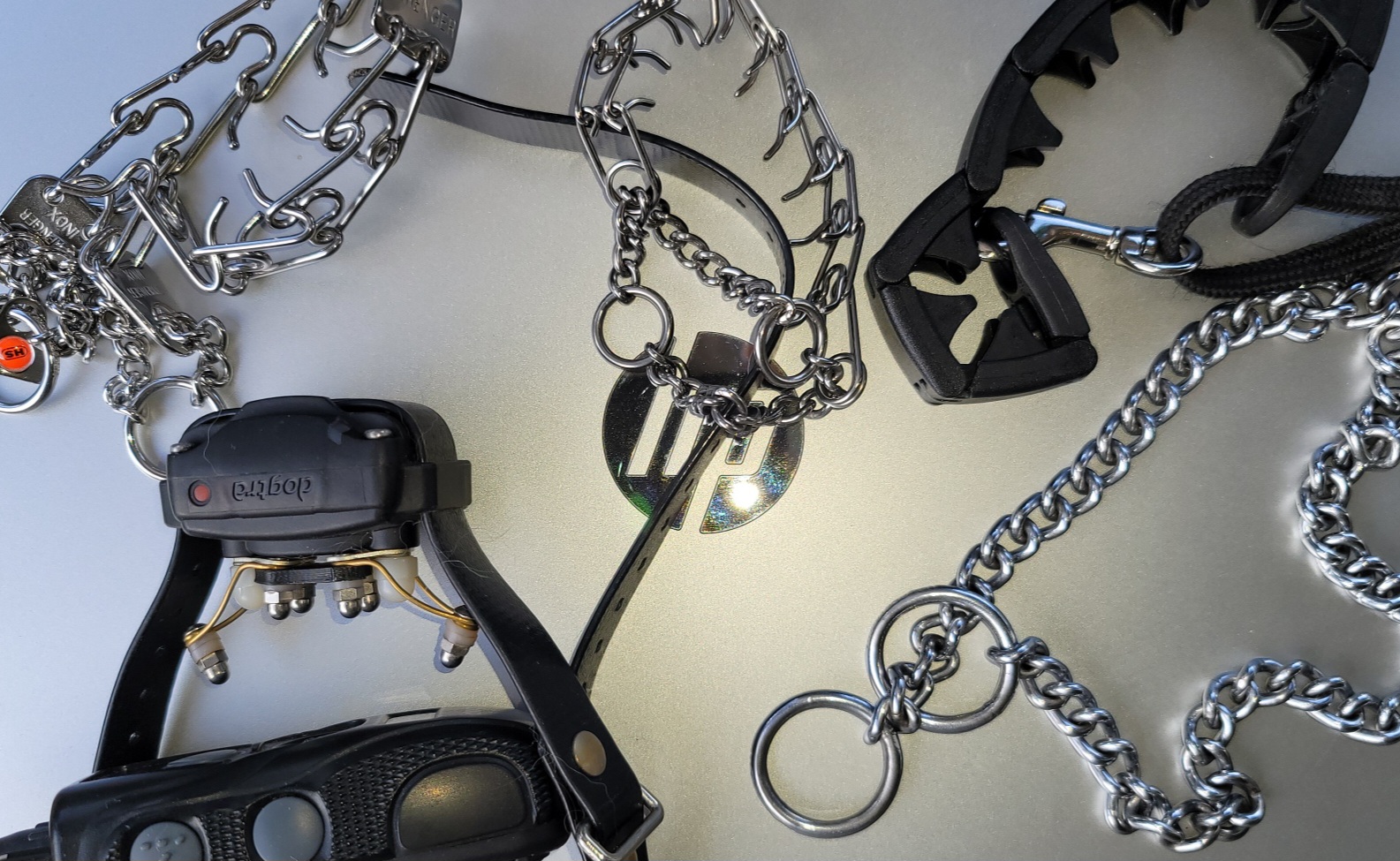There isn’t a day that goes by where someone isn’t making a comment somewhere on the internet about dog collars. What should be used, what shouldn’t be used, why one is better than the other, etcetera.
You would think that one’s proximity to heaven is hinged on one’s beliefs about dog collars. I find it pretty odd that the folks condemning a particular collar’s use do so not out of any real experience, but by clinging to the mantras of a loud but incredibly ignorant sect of folks who have repeated the shibboleths so many times, they lost the courage to discover the truth for themselves.
A dog collar is a tool, just like a leash, a crate, a dog bowl, or any other device we use. The collar itself isn’t really the problem. The perception of the collar as ‘cruel’ or ‘inhumane’ is.
There isn’t a device out there I haven’t used. There are some I prefer, and even of those, some I use only occasionally. I am thankful I have them in my arsenal of tools.
My selection process starts with using the most ‘basic’ dog collar and judge from there. Decisions are always based on the animal in front of me, the goal, and the conditions under which the dog will be expected to perform when handled by someone not *me*.
This becomes an important distinction. Especially when the owner is a tiny woman or senior who happens to own a young dog that promises to achieve a certain size or a large dog that has grown up thinking it was the Emperor of the Universe.
I work with people of all ages and abilities, and what becomes exceedingly apparent is the necessity of helping them (the owners, not the internet experts) effectively control their dogs with maximum efficiency and authority.
I am not above putting a Starmark dog collar on an enthusiastic puppy or a micro-prong on a toy dog. I will counsel an owner to consider an e-collar for quite a few different scenarios, especially if there are dexterity and ambulation issues.
The collar itself isn’t the problem. If people would smarten up, start their dogs’ training earlier, and not wait for undesirable behaviors to emerge and strengthen, we wouldn’t have half the variety of dog collars we currently have. I wouldn’t spend a ton of time Frankensteining a couple collars and cludging together something for a specific client to help them with application and control.
Many folks disregard the *owner’s* need, fixating only on their misguided interpretation that a given device is ‘cruel’ when in fact, the vast majority of collars were originally designed to make training ~less~ confrontational.
Humans’ misuse doesn’t make the device less effective, regardless of how it’s design is interpreted by folks who can only see the forest, and not the variety of trees within it.
The human equation is the unknown quantity, with their petulance and infantile lack of emotional control, and their dimwitted willingness to blame the dog’s ‘stubbornness’ instead of their own ham-handed insistence that the dog perform to some exceedingly lofty expectation after a repetition or two of any given exercise.
Humans are the ones that made that dog that way. They continually justify their smug superiority with unreasonable physical handicaps and call it preservation breeding. They pursue unnatural aesthetics while disregarding temperament and trainability (both influenced genetically, regardless of what pseudo-science is saying), and leave the mystified owner in a cesspool of nonsense and conflict.
They have no place to turn. The information they find is contradictory and full of half-witted nonsense that leaves them confused and uncertain.
Owners are blamed for their dog’s behavior, but aren’t offered solutions that would remediate that issue clearly, quickly, and without fallout. They are made to feel shame for their choices, when all they wanted to do was get help.
Cruelty is everywhere. The human that chooses to kick, beat or slam a dog against a concrete floor didn’t use a tool. He used his arms, hands, and feet. The girl that bludgeoned several dogs to death didn’t do it with a collar. She did it with a blunt instrument.
Having the latitude to help people is the grand design of every tool known to man; to facilitate convenience, or to create additional control without having to expend additional effort.
Any of us over a certain age should remember what it was like driving some tank of a car without power steering and power brakes. Many of us recall the ‘mom arm’ because shoulder restraint sat belts hadn’t been invented yet.
Every thing out there is a derivative of some other thing, and dog training tools are no exception. Some form of slip-type training collar has existed since Xenophon or before. Prong or pinch type collars have existed for over a hundred years, and electronics have been around since the 50’s
Tools are and can be innovative. They are a gift that helps us communicate with our dogs in a succinct and graceful way. Learning about them requires more than an opinion on social media.
I deplore intellectual laziness as much as I deplore cruelty. Tools aren’t the enemy. Ignorance is.


